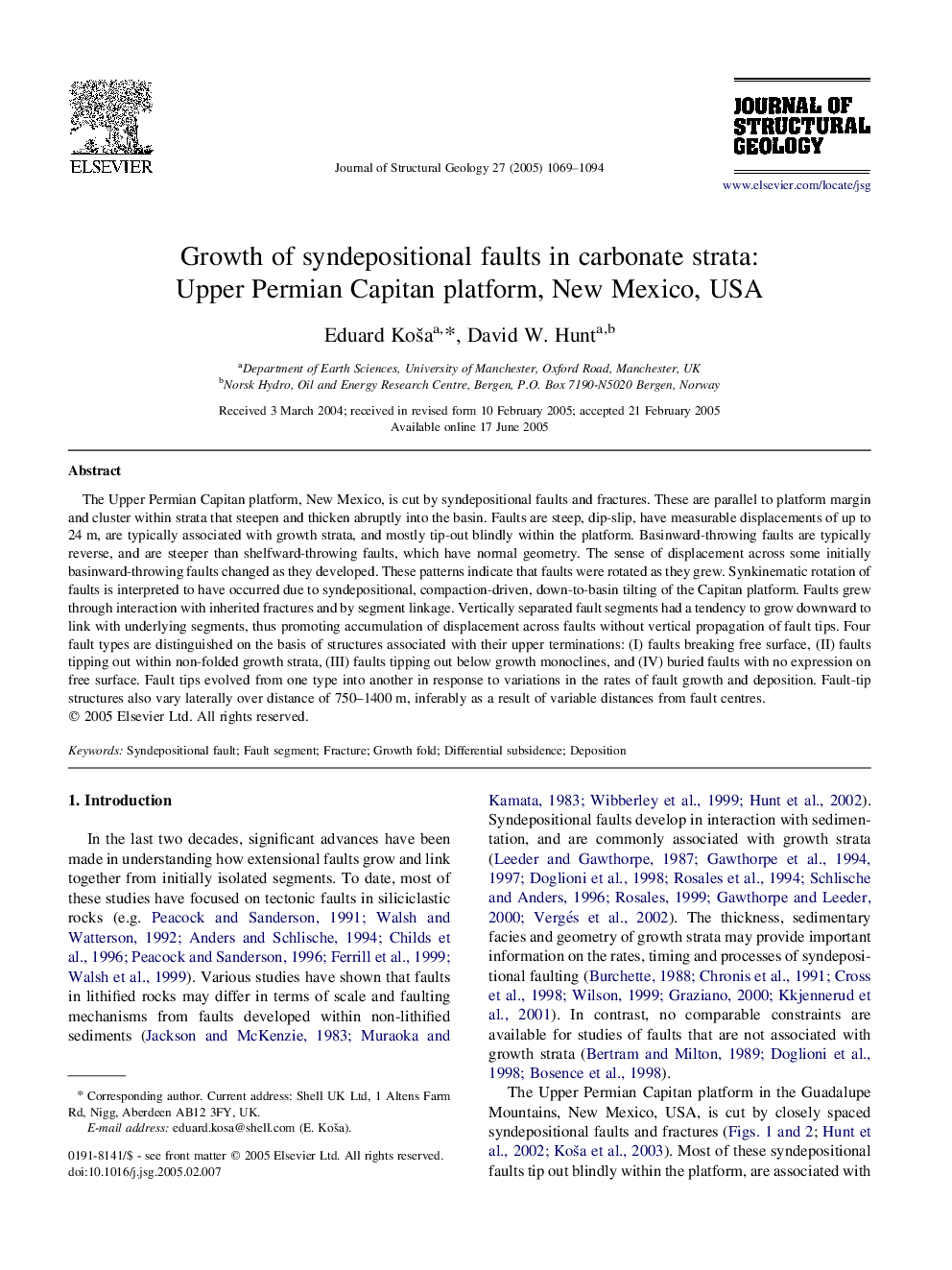| Article ID | Journal | Published Year | Pages | File Type |
|---|---|---|---|---|
| 9536582 | Journal of Structural Geology | 2005 | 26 Pages |
Abstract
The Upper Permian Capitan platform, New Mexico, is cut by syndepositional faults and fractures. These are parallel to platform margin and cluster within strata that steepen and thicken abruptly into the basin. Faults are steep, dip-slip, have measurable displacements of up to 24Â m, are typically associated with growth strata, and mostly tip-out blindly within the platform. Basinward-throwing faults are typically reverse, and are steeper than shelfward-throwing faults, which have normal geometry. The sense of displacement across some initially basinward-throwing faults changed as they developed. These patterns indicate that faults were rotated as they grew. Synkinematic rotation of faults is interpreted to have occurred due to syndepositional, compaction-driven, down-to-basin tilting of the Capitan platform. Faults grew through interaction with inherited fractures and by segment linkage. Vertically separated fault segments had a tendency to grow downward to link with underlying segments, thus promoting accumulation of displacement across faults without vertical propagation of fault tips. Four fault types are distinguished on the basis of structures associated with their upper terminations: (I) faults breaking free surface, (II) faults tipping out within non-folded growth strata, (III) faults tipping out below growth monoclines, and (IV) buried faults with no expression on free surface. Fault tips evolved from one type into another in response to variations in the rates of fault growth and deposition. Fault-tip structures also vary laterally over distance of 750-1400Â m, inferably as a result of variable distances from fault centres.
Related Topics
Physical Sciences and Engineering
Earth and Planetary Sciences
Geology
Authors
Eduard Koša, David W. Hunt,
